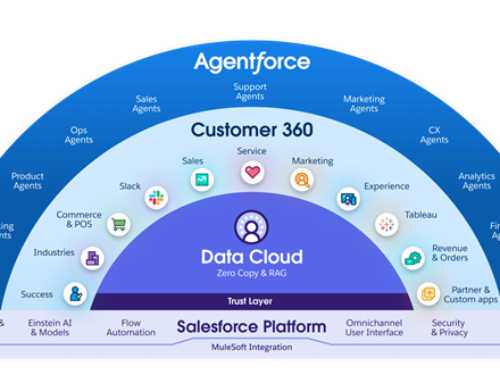By Richard Biggs, Trade Horizons North America Director
Many of you will be familiar with this tale. An established company ventures into an emerging international market, carefully limiting its exposure by appointing an independent local distributor. Initially, sales take off, revenues grow and the entry is hailed as a success. But after a while, stagnation sets in and sales plateau. Worried, management tries to discover what has gone wrong. They think they have the answer – our distributor. Surely the main obstacle to sustained growth is our local distributor, the one that got the company off to a flying start has run out of ideas and is now underperforming.
The executive team rush in and make major changes, sometimes buying the local distributor or, more often, reacquiring the distribution rights and starting their own subsidiary or finding a replacement distributor. Things get messy from here.
The hunt for greater sales and the need for improved control is a story that can often be avoided if at the outset the company in question sits down calmly and perhaps speaks to an advisory firm, and started asking questions such as: –
- Does our product or service warrant a local distributor?
- Does the distributor we are speaking to work with our competitors, or is even owned by them?
- Should our plan be to use a distributor just for the market entry phase?
- How do we develop a strategy to get us through an indirect to direct transition that is not too costly or disruptive?
- How can we ensure our chosen distributor is set up to succeed – what real resources do we need to implement?
- What if we control marketing and global accounts and have the local partner handle sales and distribution?
Distributor due diligence is often overlooked, yet it is a vital step in the growth of a business when it heads into new international markets. I often discover mismatched company / distributors partnerships – where one side is substantially larger in size than the other. A distributor that typically works with large clients will struggle to service a smaller, more entrepreneurial company – maybe like yours. You will find that you are not important to them or maybe it can be more sinister. You could have discovered the distribution partner to categorically avoid at all costs. Maybe they secretly own a competing brand, maybe they represent one of your competitors and they want to limit your success in their market. A distributor is not always a distributor – they can be your biggest competitor.
It’s all about Due Diligence and then Business Development
Many companies with multinational ambitions stumble onto a step-by-step strategy for penetrating markets in emerging countries. Without the appropriate due diligence, they may have not discovered the local nuisances in the country they are targeting for growth. A distributor in Saudi Arabia is going to behave rather differently than one in Australia. Expecting the same outcomes with the same budget in the same timeframe is never going to end well.
The ‘thrive, retreat, and attempt to reinvigorate’ cycle is often baked into a company’s expectations and ends up forming part of their official policy. To many readers, the strategy just described might make sense. To minimize market entry risk, to access local knowledge, expertise and networks is difficult without appointing a local distributor – even if you know that their time as your distributor is only going to be short. After all, it provides quick sales volume, minimizes market investment and you gain access to customers quickly. But is it right for your company? Due diligence my friends, DD.
Does a distributor fail in the eyes of the company because they are not good or is it because the wrong one was chosen at the start of market entry? Can a company blame a distributor for making early sales of their core products to their existing customers and then stumble when asked to sell new products, penetrate new market segments or achieve better sales in a newly competitive market without larger marketing spend? Can a company rightly expect market dominance when they select a small local distributor who seeks a stable and controlled level of business in their local market? All issues that should have been covered during due diligence.
Unsurprisingly, the local distributors will have their own opinions about why the relationship failed over the longer term: “They expected the impossible.”, “They didn’t give us enough support for growing the business.” “They did not give us the right technical training.” and so on.
The mutual finger-pointing overlooks a point that seems obvious: neither party—the company nor the distributor—invests sufficiently in strategic marketing or in aggressive business development, especially when it comes to smaller emerging markets. It may be smart for corporations to minimize risk when entering the markets, but a subsequent lack of investment and managerial attention can seriously hamper performance and so often leads to distributor disappointment.
I don’t expect that international companies set out to neglect their markets. What’s needed always changes during and after market entry, but companies don’t adjust their commitments accordingly. As a business grows in an international market, marketing strategy evolves, and each sequential phase requires management resources specific to the task, different skills, and financial investment. Requirements at the outset are very different from those three to five years later. The multinational company’s product line and the distributor’s business and capabilities probably fit best at the point of market entry. As time passes, the fit deteriorates. The distributor may be less able to deliver growth as the business moves away from its core customer base. This is a somewhat natural cycle that is widespread.
Nevertheless, I think there are ways in which local distributors can continue to contribute after market entry; the economic reasons for the existence of distributors do not disappear after subsidiaries are established. The key to solving the problems of international distribution in developing countries is to recognize that the phases are predictable and that multinationals can plan for them from the start in a way that is less disruptive and costly. Due diligence and a business development plan to the rescue here.
Manage the Life Cycle of your distributor and select wisely.
As previously discussed, most companies entering new markets have similar objectives: partnering with local distributors, at least in the early years, to benefit from local expertise, wanting to control their business expansion at a strategic level while keeping costs and risks to a minimum.
While these are indeed good objectives to have, finding the correct balance among them at any particular time is tricky. During the early parts of market entry teaming up with a local partner makes sense. Local distributors know the traits of their markets, and most customers prefer to do business with local partners. Changes during later phases of market entry and especially when a company reaches the stage where it wants to control distribution, are usually corrective moves to redress imbalances that emerge during the initial phases, and many of these changes lead to new imbalances.
The following suggestions can form part of your discovery (distributor due diligence) and help avoid distribution problems down the road.
Select your partner, do not let them select you.
I always shudder when I speak to a company and they tell me they found a new distributor quite easily. They had a booth at a trade show in some far-off country and a distributor visited their stand. They started talking and luckily for them this distributor was interested in representing them. A venture into a new international market should be the result of a strategic decision based on a proper market assessment. But that’s not how it usually happens. Most of the initial moves into new countries occur in response to proposals from potential distributors. A simple ground rule I like to share is – don’t go with the distributor who walks the corridors of a trade show. They are precisely the one that will disappoint you. The one you want is the one that is far too busy to walk around trade halls and the one that isn’t easily persuaded that they should work with you.
Likewise, distributors that offer to make your life easy and visit your offices should be avoided. Just because they seem convincing, and your cost of time and resources would be low is no reason at all to base any decisions upon.
Here is a useful idea that any good market entry advisor should share. Focus firstly on identifying the country, then find a distributor. Be market-led rather than distributor-led and do take the time to conduct a thorough review of a potential partner. Good results will follow. If you want to take it a step further and make the distributor search market-led then ask your largest potential customers to name their preferred suppliers.
Seek a distributor capable of developing markets and not those with a few obvious customer contacts.
Selecting a distributor and the conditions of the relationships should serve your company’s long-term goals. An obvious distributor is not necessarily the best partner for the long term. Just because you start talking to a distributor who currently sells similar items or has connections with all your prospects does not make them a good partner. A good distributor may not be a good one for you. What looks like a perfect market fit could actually be the worst choice. The closeness of the market fit can be a liability because the distributor might represent the market’s status quo, if you ask them, for example, to sell a replacement technology or attempt to change the market. They may tie you up in contracts and do little to advance you in their market.
Trade Horizons is often asked to conduct distributor searches in countries across the world. Quite a standard request, but only a few of our clients ask us the right question. The right question might sound like this: “Can you go and find a distributor that is a good ’company fit’—a partner with a culture and a strategy we feel comfortable with, in terms of the investment they’ll make, the training they’ll give their people, and the support they’ll ask from us”?
In many cases, we suggest partners who have no experience of our clients’ market. This may sound bold and dangerous, but it is a strategy that can produce fabulous results. Avoiding the obvious partner who can generate quick sales—in favor of a partner with a greater willingness to invest, and an acceptance of an open relationship that draws on our clients experience in marketing its own products.
Think of your local distributor as a long-term partner and not a ‘quick win’ market-entry agent.
By structuring the relationships so that distributors become marketing partners will result in you partnering with somebody willing to invest in long-term market development. Go beyond the usual distributor exclusivity clause, and consider more effective solutions like creating an agreement with strong incentives for achieving goals like customer acquisition or new product sales. Treat your local distributor like your marketing department in that overseas country and don’t saddle the relationship to doom by signaling that they will only be distributors for the short term. Drafting up contracts that state you can buy back distribution rights is not a long-term motivator and should things go well you could face lengthy court battles if the distributor does not want to sell back rights.
Encourage market entry success – commit resources early.
If you have done your research properly and you have decided to enter a market then inject money, managers, and proven marketing ideas. Most importantly do it in the early days, don’t just wait for sales success to happen before you commit resources – it may never happen.
To retain strategic control, we see international companies commit corporate resources, especially true during market entry, when corporations are least certain about their prospects in new countries. Sending in technical and sales personnel or offering training to distributor employees is a good start. With some of our clients we have seen greater results when they go further and earlier in the relationship, especially in markets regarded as strategically important. Investing in a minority equity stakes in a distribution company does increases exposure without achieving a great amount of control, but it does open the door to cooperative marketing based on shared information. This in turn increases the closeness and effectiveness of both the company and local partner.
Some of our clients are not comfortable committing in uncharted markets with independently owned distributors. We’d counter this argument by suggesting that many of our successful clients already have effective controls for managing independent distributors in their home markets. Surely these same controls would work overseas? The added opportunity to enjoy an improved relationships with local distributors and better business performance certainly balances the risks I’d say?
Keep control of your marketing strategy.
Your distributor should be permitted to adapt your strategy to local conditions, but you should install tight controls over which products to sell, positioning and budgeting. By providing solid marketing leadership you will be in a strong position to exploit the full potential of a global marketing network. Be aware that this might involve some of your employees working full-time at the local distributor’s offices. Alternatively, you could establish country or regional managers who can keep a close watch on both distributor performance and customer needs.
Insist your distributors provide detailed market and financial performance data.
Your ability to exploit competitive advantages in an emerging market depends on the quality of information you receive from the market. A contract that requires your distributor to provide detailed market and financial performance data is important. A true distribution partner can be identified by their willingness to provide such valuable information and is a true bellwether of how successful the relationship is going to be in the future. Some distributors will counter and say that this type of data is their ‘secret sauce’ – they won’t share customer identification and price levels – a discussion point at the very least during due diligence.
The hope is that this article helps you appreciate the need for the careful appointment of a local distributor in an emerging market. Securing the best distributor is not as easy as jumping on a plane and going to a trade show or participating in a quick trade mission. The previous statement becomes extra important if you are looking at a strategic overseas country.
We urge you to do your homework, get on-the-ground advice and build a network of quality distributors. Put in the effort from an early market entry point and you’re chances of being rewarded increases many times over. And remember, a good local distribution partner is an implementor of your marketing strategy, rather than an outpost marketing department in a faraway country. You’ll experience a better working relationship, fewer plateaus and crises, and more consistent growth in market share and sales revenues. Understanding that you can control your international operations through better relationship structures and not just through ownership might just lead you to finding longer-term roles for local distributors. A distributor is not always just a distributor.
This article was written by Richard Biggs, Trade Horizons North America Director. You can connect with Richard here.
Trade Horizons
Trade Horizons is an award-winning market entry company, assisting ambitious companies to identify, develop and grow sustainable revenues in new geographic markets. We offer support to clients in international strategy development for their global business growth, and throughout the key phases of market entry execution – Preparation, Launch and Growth. Click here to find out more.







